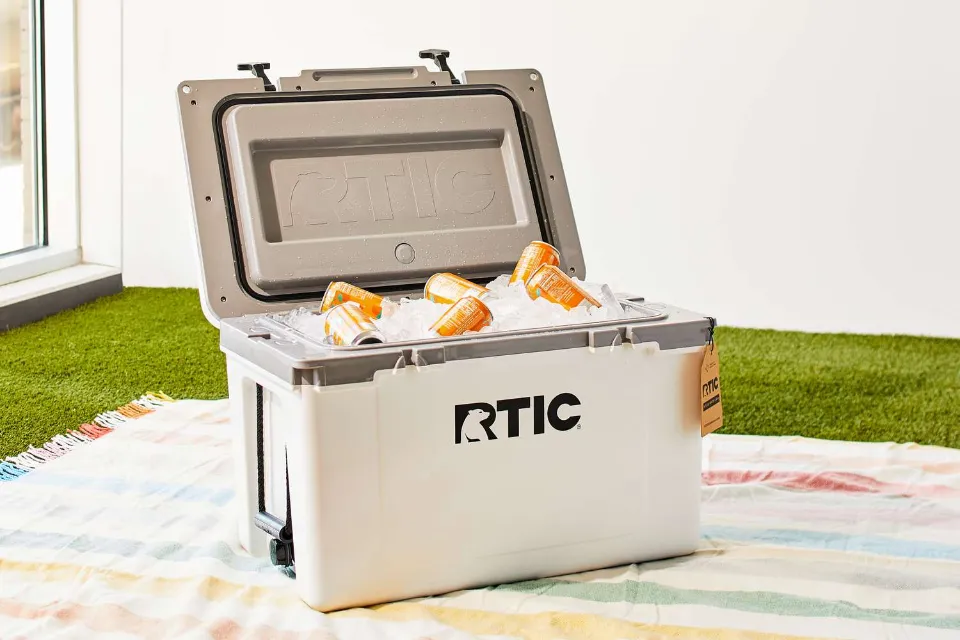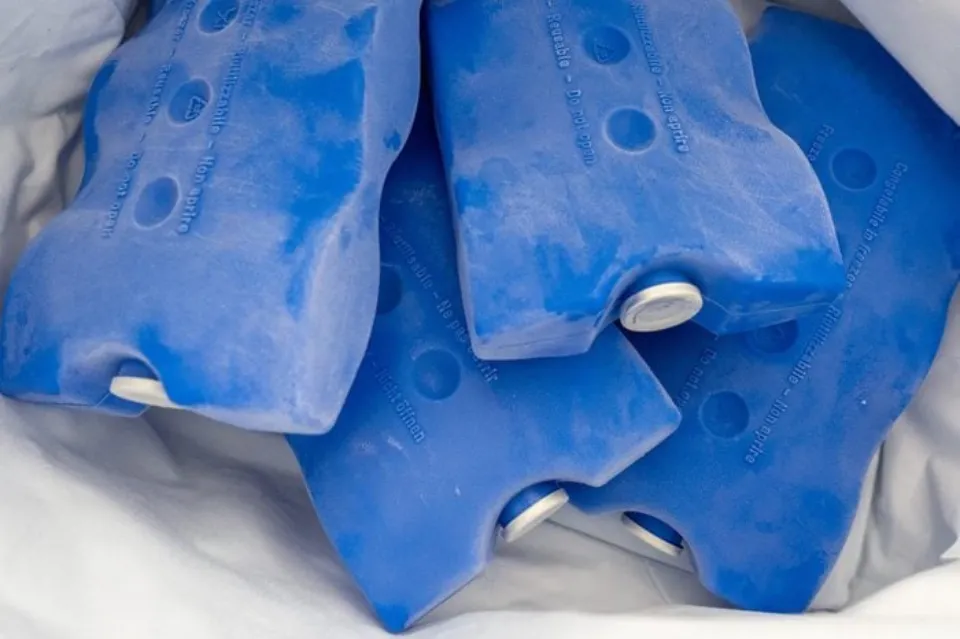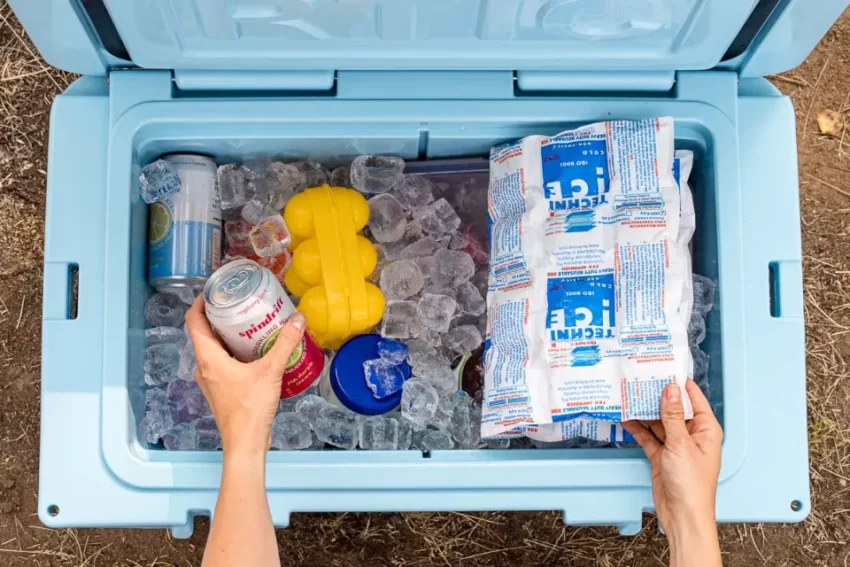Investing some time in nature? You’ll need to know how to keep food cold while camping. These are the best hints and techniques we have.
The ability to keep food cold while camping can make a camping trip more enjoyable and fun as well as help you eat more healthily. However, if you don’t know how to keep food cold while camping, it can also be disastrous.
Continue reading to learn how you can bring your favorite camping meals on the hottest trips and safely enjoy delectable food.
Table of Contents
How to Keep Food Cold While Camping?
Here are some tips you can use to keep food cold when camping.
1. Always Use a Top-quality Cooler

You should prioritize bringing a high-quality cooler. Achieve your desired results by purchasing one that is within your means. The best products typically have thicker walls, better insulation, and increased durability. This prolongs the life of the ice. Keep in mind that you get what you pay for. Keep a thermometer inside the cooler to ensure that the recommended 40 degrees Fahrenheit is maintained. We at Crowder Bros.
Hardware supports the YETI brand and suggests their coolers. For longer adventures lasting a few days or longer, the larger YETI coolers are fantastic. Larger coolers also aid in preserving interior temperatures for a longer period of time during those hot Florida summer days.
Longer camping trips lasting a week or more are confidently enjoyed. Visit one of our YETI authorized dealer locations in Spring Hill or St. To find the cooler that best suits your needs, visit Pete Beach.
You Might Also Like:
2. A Second Cooler is a Must
The majority of seasoned campers are aware that it’s best to always pack a second cooler, one for food and one for drinks. Among the many advantages are improved interior organization and a longer shelf life for perishables. Finding what you want inside the coolers is made much easier by the ease with which the two different coolers can be distinguished. A good solution is to use two YETI coolers of different styles.
A successful camping trip will be ensured by bringing two coolers. Indulging in food and cold beverages for longer will improve your experience.
3. Keep Your Coolers Closed
During a trip, drinks are typically consumed more frequently. For this reason, it’s crucial to keep the drinks and food items separate in two different YETI coolers.
The ice will melt as a result of hot air entering the cooler and cold air escaping. The food cooler’s contents will remain colder and fresher for a longer period of time if the openings are kept to a minimum, and beverages from the drinks cooler will be simple to reach.
4. Meal Preparation before the Trip
Keep yourfoodlonger by preparing your meals before your camping adventure. The bottom of the dish should contain meals that must stay frozen. Eat the food that will spoil the fastest at the beginning of the journey to reduce food waste.
Use whatever best suits your needs from the wide range of meal-organizing products offered by YETI coolers.
5. Use Freeze Packs

Ice packs are great for keeping food cold while camping, without the mess of melted ice cubes. These large freeze packs are reusable, made from non-hazardous materials and stay cold for up to 48 hours.
6. Ice Jugs
Use a used plastic juice container; the ones with handles work best. Fill it with water, then freeze it at least three days before your trip.
It will not melt as quickly, usually within a full day, if the water is kept frozen in the jugs for a longer period of time. Now that the ice has melted, you can drink the water.
For a few days’ worth of cold water, we advise 1 large jug per large cooler.
7. Salt
In regions where it snows, melting ice off of roads is typically associated with salt and ice. According to Chemistry 101, adding salt lowers the melting point of water.
When salt rocks are added, the melted water surrounding the ice actually cools down more than the ice itself. Just enough salt should be added to ensure that the chemistry is in working order.
8. Keep It in the Shade
Ice simply melts in the sun’s heat. On your camping trip, keep your YETI cooler out of the direct sun and in the shade whenever possible.
Away from anything that is hot or produces heat should be kept the cooler. A grill or campfire next to the cooler will also shorten its lifespan and possibly melt the cooler’s material. Keep your cooler in a convenient location that is also away from heat sources.
9. Limit Quickly Spoiling Foods
We are accustomed to eating fresh meals that include perishables in our daily lives. Bringing our daily routines on a camping trip lessens the enjoyment and experience of doing something different. In a YETI cooler, there are plenty of healthy and delectable food options that will stay fresh for a very long time. Unlike meat or fish, sausages and jerky keep well in a cooler.
Cheese can be a tasty addition to any dish or food. Bring aged hard cheeses like parmesan or chedder and avoid softer cheeses like mozzarella or brie because they melt more readily and are more likely to spoil.
Keep in mind to drink plenty of water while camping because there will be a lot of activity, and be aware that hard cheeses and dehydrated meats typically have high salt content.
10. Backups
Bring non-perishable snacks, a second 1-gallon jug of water, dried fruits and meats, and mixed nuts. Now go out there on your next camping adventure and enjoy it confidently with trust that your YETI cooler will keep all your food and beverages cold for a long time.
Also Read: How Do Amish Keep Food Cold?
Final Words: How to Keep Food Cold While Camping
The experiences are priceless and irreplaceable whether you go camping with your family or close friends.
Knowing food and drinks will stay for a long time will make your experience more tranquil and enjoyable.
Read More: How to Keep Fried Food Crispy?
FAQs
How Do Amish Keep Food Cold Without Electricity?
Fruits, nuts, vegetables, and other foods are kept in root cellars by the Amish.
How Can I Keep My Fridge Cold Without Power?
If the power is going to be out for a long time, buy dry or block ice to keep the refrigerator as cold as possible.
How Did Pioneers Keep Food Cold?
In areas with limited sunlight, people would dig icehouses into dirt banks, line them with sawdust, and fill them with blocks of ice harvested from frozen rivers and creeks.

